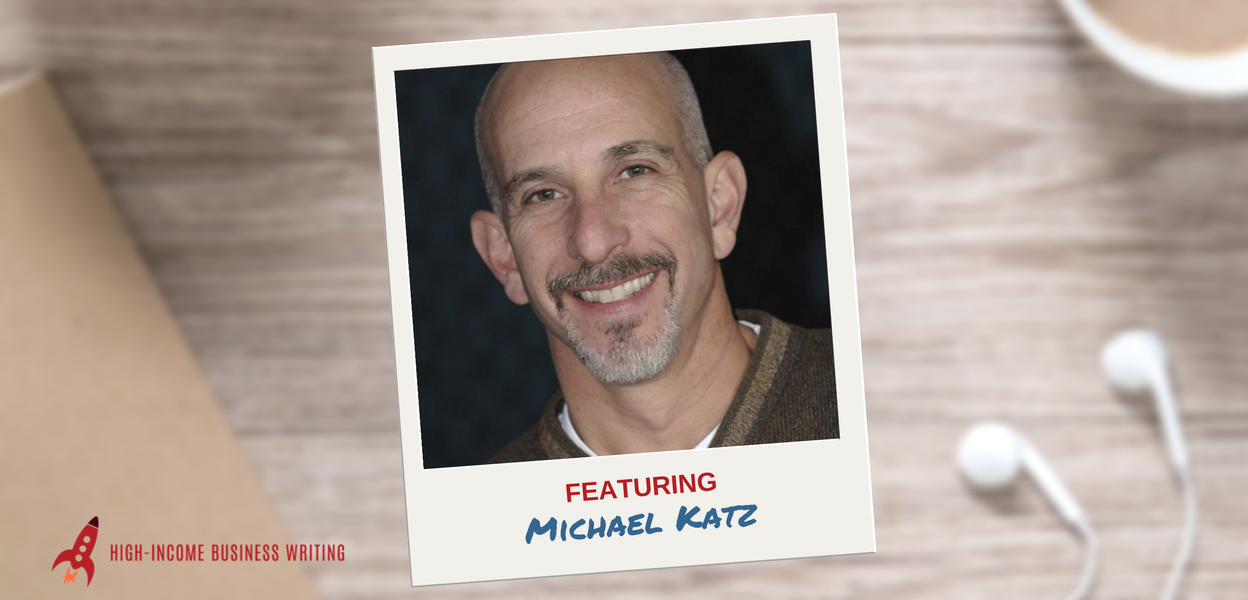Most freelance writers I talk to never want to go back to a regular job.
But many of them do miss the steady paycheck. (Usually that’s the only thing they miss!) Which begs the question: How can you add more predictability to your freelance income?
I’ll be showing you several ways to do that over the next couple of months. Because, frankly, there’s no single way to ensure predictability. It requires smart strategy and hard work.
But let’s get started on that discussion by addressing one potential solution to the income variability dilemma: adding email newsletters to your list of services.
My colleague Michael Katz has made a great living over the last 13 years writing, producing and managing email newsletters for clients. He’s also taught many freelance writers how to do the same. And in this lively interview he details the opportunity — including what it entails, what you can charge, how to lock yourself in with great clients who can pay you $700 to $2,000 every month.
The notes that follow are a very basic, unedited summary of the show. There’s a lot more detail in the audio version. You can listen to the show using the audio player below. Or you can subscribe in iTunes or on Stitcher to get this show delivered straight to the Podcasts app on your smart phone, tablet or iPod.


High-Income Business Writing with Ed Gandia
#021: Email Newsletters: A Steady and Lucrative Writing Opportunity
What types of email newsletters are we talking about?
Email Newsletters of interest to professional writers are:
- Informational
- Content heavy
- Useful
Look for newsletters that act as a proxy for a company or individual. Target newsletters that share knowledge, insight and personality.
Companies need content that shows they’re experts in their field. Business owners understand there’s a marketing opportunity in newsletters. But they’re terrible at or hate writing. Writers solve the problem.
What does this type of work involve?
Just like a magazine, there are three parts to a newsletter:
- Design – one-time set up
- Delivery – all kinds of vendors can help with that (e.g. Constant Contact, Mail Chimp, etc.)
- Content – changes every time you publish
Most writers make the mistake of just selling the content part. However, most clients don’t want to get involved in design, set up, etc. They want more than just the writing part. So, provide one-stop shopping. Hire a designer. Hire a tech guy to help with the back end. Take care of the whole thing.
When you provide the whole package, the client has to provide information for the content, but that’s it. This makes it easier to sell.
What’s the sweet spot for this kind of service? Is it small to midsize companies?
The sweet spot is less a function of size and more a function of what the company does. The more intangible the product and the more interchangeable it is with competitor products, the easier it is to sell this service.
Companies are looking for ways to distinguish themselves from competitors. They don’t want to be generic. Often, the main differentiator is people: their personality, their point of view and the way they interact. So often, the best clients for this kind of work are professional services: consultants, coaches, attorneys, etc. Often the newsletter is their only marketing program. Doing it well can have a big positive impact on their business.
So the sweet spot is useful information combined with natural, authentic personality that reflects the company.
Keep in mind: If all you’re selling is writing (instead of a complete package), you’re in danger of being commoditized. It makes it easy for prospects to compare you to other writers. But when you package what you do as a “newsletter service,” you differentiate yourself. It’s easier to sell. You can charge more. It prevents you from being a commodity.
How do you organize your services? How time intensive are they?
Katz organizes his services into two phases:
- Building the “machine”
- Ongoing monthly production
Phase one: Building the “machine”
- What’s the newsletter going to look like? (design)
- How are you going to deliver it? (delivery)
- What content do you want? (audience, voice, what to write about)
This phase ends when the first newsletter is launched. Katz charges a flat rate for this phase.
It takes 2-3 months to build the machine. Katz meets the person or talks over the phone every other a week for several weeks, spending about 90 minutes each time. You can’t do this in just a few days. People need time to digest and think. Also, you need to time to bring in the designer and tech guy at the end.
Phase two: Ongoing monthly production
Katz gives clients two options for providing content:
- Interviews
- Coaching
Interviews: Katz interviews the client and writes the content based on the conversation. Most clients choose this option.
Coaching: The client writes the first draft, and Katz fixes it up.
What can you typically earn for these services?
You really make your money on phase two of the process. You want the client that publishes month after month for years. Charge something significant for phase one, but the bulk of your money will come in phase two.
If you’re just starting out, you could charge less for phase one.
Pricing for building the machine
Katz includes the cost of the designer and back-end tech guy in his price. This removes uncertainty for the client. Designers have cost him as little as $200 and as much as $1300. Most designers aren’t techy enough to build a newsletter in Constant Contact, etc. so he uses a tech guy for that. If the cost of both designer and tech guy come in under $1000, he’s happy.
If you’re just starting out, maybe charge $2000-$4000 for phase one. You don’t want price to be a stumbling block, but don’t want to give it away either.
Pricing for monthly production
Charge at least $750 per month if you’re going to interview someone. Katz has charged up to $6000.
He charges about half these rates when the client writes the first draft.
He invoices on a quarterly basis, which is easier than issuing each month.
Katz suggests working backwards from the money you need to make a living at it.
He produces maybe 12 or 15 newsletters a month for his clients in total.
His approach: Don’t raise prices on existing clients, but bump prices up for new clients. The more you charge, the more generous you can be with your time. Also, people who pay more tend to be better clients.
How much demand is there for these types of services?
Today, there’s a renewed interest in content marketing, which includes newsletters. Email, newsletters and longer-form content provide fuel for social media. People need stuff to link to.
To get into this field, narrow your focus. Choose doctors, lawyers, pet stores, etc. You want to be the go-to person for that field. Understand their business and industry.
But really, you don’t need to be an expert in the subject matter. Your expertise is writing and “pulling the juice” out of a topic.
Should you position yourself as a newsletter writer exclusively? Or can it be one of several services you offer?
Yes to both. Katz did newsletters exclusively for over 10 years. But today it’s one of several services he offers.
The keys to success:
- Specialization
- One stop shopping
- Giving clients options
Where can listeners learn more about you?
Katz has a free newsletter on his website, and his most recent book is a free download.
Katz also has a step-by-step guide for creating a newsletter writing business. It’s offered through the publisher, American Writers and Artists (AWAI). And through Fri, Sept. 20, AWAI is offering $50 off this program. You can learn more here:
Additional note: If you’re selling newsletters as a service, it’s good to have a newsletter yourself. Show clients you can walk the talk.
Want More of This Stuff?
Want to get more tips and strategies for boosting your writing income? There are
three ways you can enjoy these tips and strategies, share them with friends and help me grow this movement to banish the starving writer syndrome:
- Sign up for this podcast on iTunes. Click here to subscribe to the podcast on iTunes.
- Subscribe to this podcast through the Podcast app on your iPhone or Android phone (free from the app store).
- Leave a review — Share an honest sentence or two about the show on
the iTunes page and give it a star rating (this makes a HUGE difference in helping others find the show). - Share the love — Share this episode with friends and colleagues. An easy way to do that is by using the social media buttons down below.
Finally, if you have a question you’d potentially like answered on a future show —or if you’d like to be considered as a guest for a future episode — please let me know: ed at b2blauncher dot com.
Thanks again for your support!
Till next time,
-Ed






